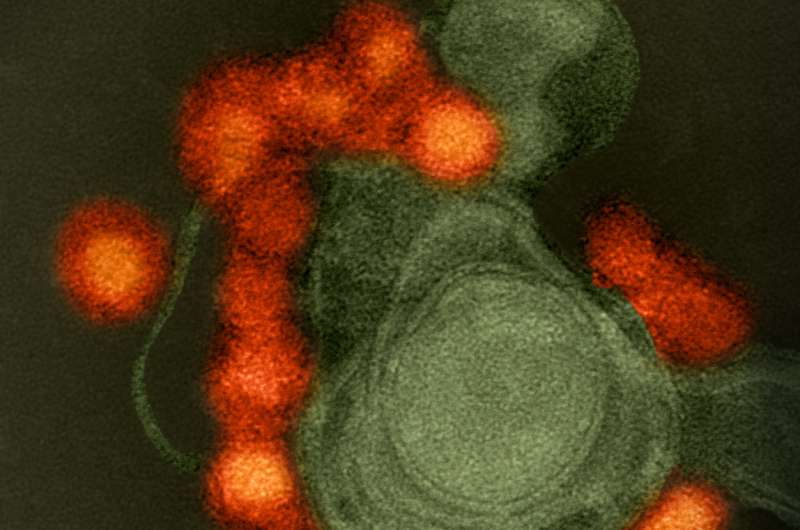Researchers identify role that skin plays in Zika virus

When a mosquito infected with Zika virus bites someone, the skin is the first line of defense against infection.
A Duke research team was able to pinpoint exactly how the skin responds to the invader in a paper published April 1 in Science Advances.
Using a mouse model, the researchers showed that a messenger molecule known as IL-27 acts as a security guard for the skin, signaling skin tissue to ramp up production of anti-viral proteins, the body's main league of warriors against the virus.
The researchers also found that IL-27 only signals for help when Zika virus enters through the skin—when it enters the body some other way, IL-27 does not respond. Notably, the neurological symptoms associated with Zika virus disease are more pronounced in the absence of IL-27 signaling.
"The signaling of IL-27 to induce antiviral proteins is part of our body's innate immune response," said lead author Amanda MacLeod, M.D., associate professor of dermatology in the School of Medicine. "What's particularly interesting is that, especially in the absence of acquired immunity and memory responses, our natural innate immune system is highly relevant as it acts much faster—anywhere from hours to a day—than acquired immunity. Most vaccines require boosters over months or years to attain host immunity."
While innate immunity can decide between 'live and die', adaptive immune responses are pivotal in establishing memory that protects the human body from future challenges with the same pathogen, said MacLeod.
Zika virus, along with other viruses such as HIV and SARS Cov-2, has proliferated among human populations due to limited protective innate immune responses and the lack of a preventive vaccine. These viruses are able to evade immunity in a variety of ways. Stimulation of the natural protective antiviral pathways may provide the path to new therapeutic benefits, while limiting immune-mediated tissue damage, also known as a virus-induced cytokine storm.
"Whether our results could also potentially be applied to other viral pathogens such as SARS Cov-2, the pathogen that causes COVID-19, remains to be tested in future studies," MacLeod said. "Epithelial tissues including the skin, lung, intestines and the urogenital tract share some commonalities but also have significant differences in their barrier architecture and their immune responses and so there are similarities and differences between viruses."
More information: Jeffery T. Kwock et al. IL-27 signaling activates skin cells to induce innate antiviral proteins and protects against Zika virus infection, Science Advances (2020). DOI: 10.1126/sciadv.aay3245



















